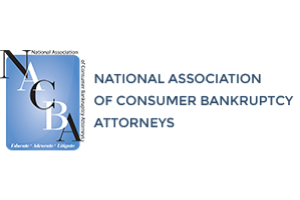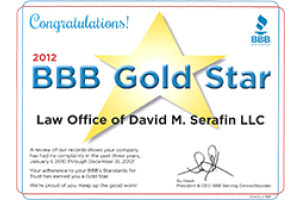Colorado Bankruptcy and Retirement Accounts
February 21, 2011
By: David M. Serafin
Because ERISA qualified retirement accounts and Individual Retirement Accounts (IRAs) are exempt for amounts slightly over $1 million from the claims of all creditors (except for an ex-spouse), an opportunity for smart pre-bankruptcy planning exists. As an experienced Denver bankruptcy lawyer, I frequently advise clients to make the maximum eligible contribution to a 401(k) plan, or Roth IRA or Traditional IRA, prior to filing a bankruptcy petition, in order to maximize the bankruptcy exemptions allowed by Colorado and Federal law.
However, many of my bankruptcy clients do not have excess funds lying around. Instead, many are forced to take out a 401(k) loan to make ends meet. Whether the monthly repayment of a loan from a retirement plan can be deducted from disposable income under the Means Test depends on whether a chapter 7 or chapter 13 bankruptcy was filed.
A 401(k) loan cannot be deducted from gross income in a chapter 7 (and any attempt to do so will incentivize the U.S. Trustee to file a Motion to Dismiss for abuse or to convert to chapter 13, particularly if disallowance of the deduction causes the debtor to fail the Means Test). But, if a Motion to Dismiss is anticipated, proof of 401(k) payments made by the chapter 7 debtor should still be made to the U.S. Trustee to minimize the likelihood of a presumption of abuse.
On the other hand, 401(k) loans can be deducted from disposable income in chapter 13 matters – similar to how mortgage, car or food payments are deducted. A sizable repayment for a 401(k) loan (or a significant 401(k) contribution from regular income, regardless of the existence of a loan) may make the difference between lowering the monthly payment to unsecured creditors or reducing the Applicable Commitment Period (i.e. number of monthly plan payments to be made to the chapter 13 trustee). A viable pre-bankruptcy strategy is for the debtor to either maximize 401(k) contributions or take out a loan from a 401(k) – if at a favorable interest rate – just prior to filing to minimize amounts paid to unsecured creditors.
For instance, say that the bankruptcy debtor earns $80,000 and is single with no dependents. This debtor will not (absent unusual circumstances) pass the Means Test and is ineligible for chapter 7. Here, it is advisable for the debtor to maximize 401(k) contributions, as allowed under the IRS laws, which will often serve as a dollar-per-dollar reduction is disposable income to be paid to unsecured creditors. Similarly, this same chapter 13 debtor with a $15,000 401(k) loan balance on the date bankruptcy was filed will be paying $250/month less (i.e. $15,000 divided by a 60 month plan) in disposable income into the chapter 13 plan.





